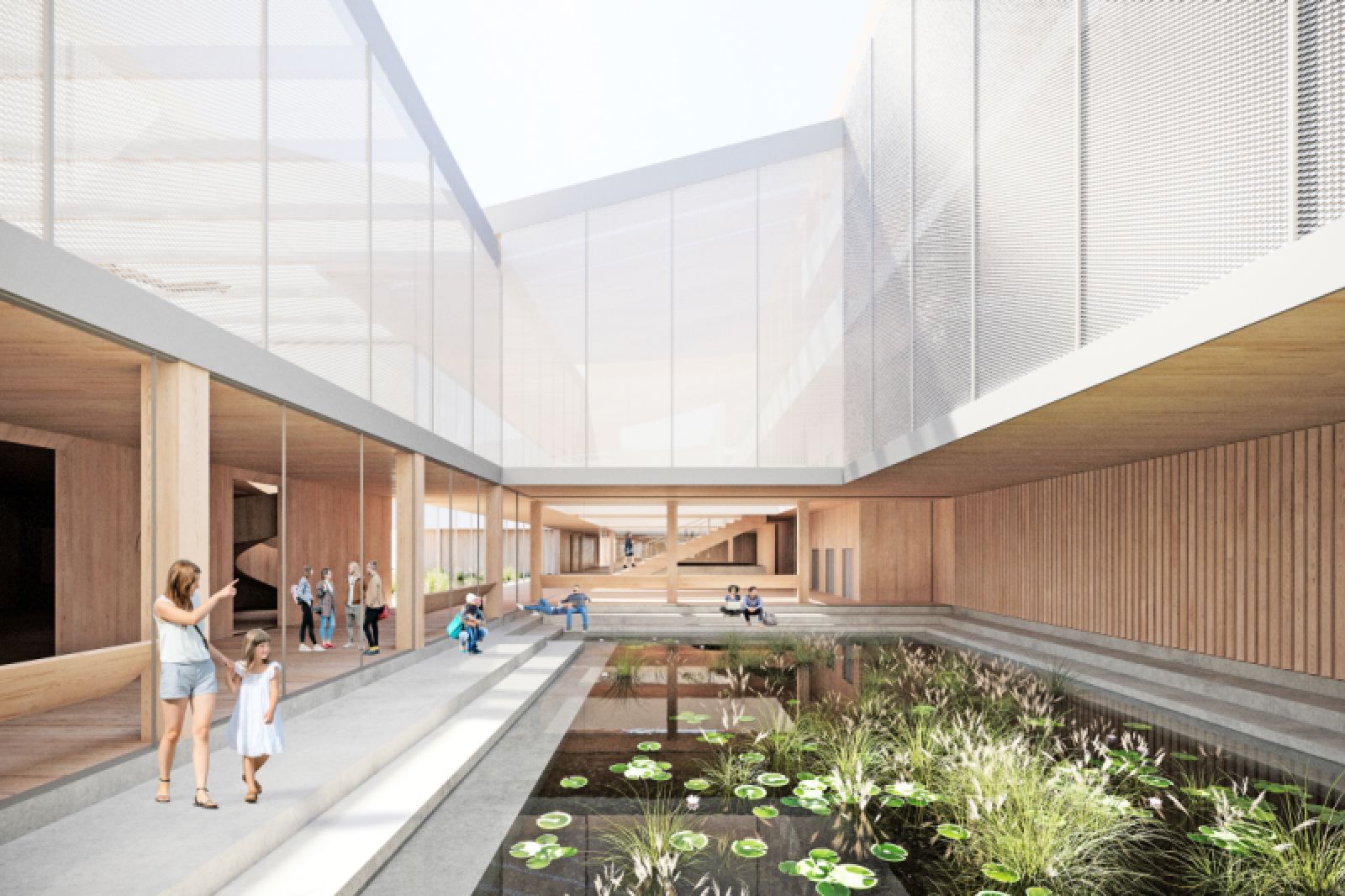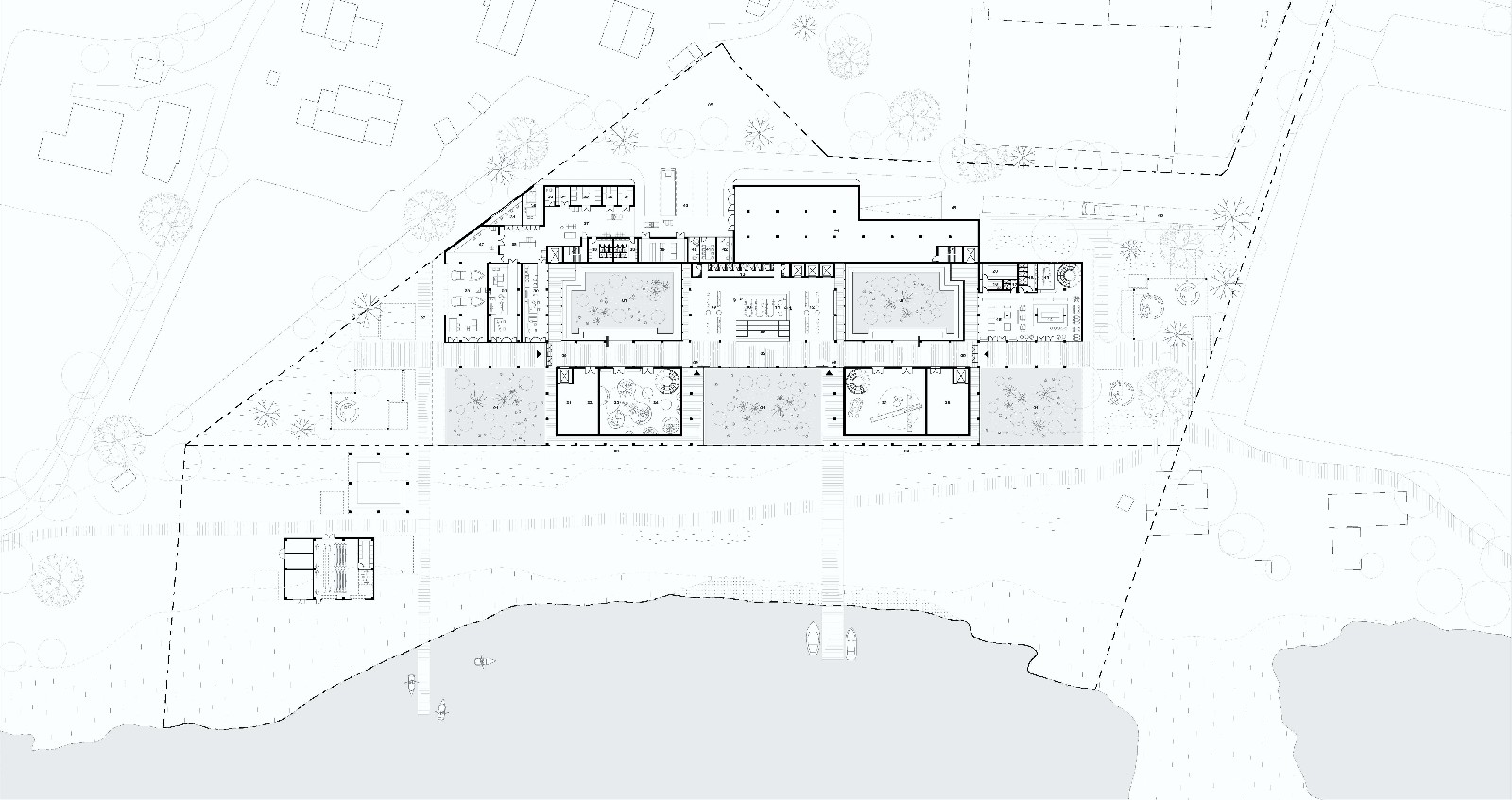The unique geography of Fedsund has historically established its role as a key site for the log driving industry and wetland research. The new museum is an extension of this history to educate locals and international visitors of the cultural and heritage significance of this national landmark.
With River Glomma as the backdrop, the site is at the nexus of where land meets water and currently operates as a timber sorting facility for log drivers and hosts a small museum and training facility. The design echoes the topological features of the region; delving into a concept that blurs the boundaries between land and water. The overall building form consists of a series of interlocking pavilion-like volumes, each featuring open atriums.
This sequence of structures are connected by wetland inspired landscapes to cultivate the indoor-outdoor synergy throughout the building. The landscapes act as a close-range exhibit for education and interaction purposes; raising awareness of the crucial role wetlands play within the natural ecosystem. Surrounding the landscape are individual pavilions which can be interpreted as one coherent building form from afar, and then can be read distinctively upon arrival.
A timber public promenade connects internally from the building to outside River Glomma, providing an interlinking spine to the waterfront- drawing-in and connecting visitors from both land and water. The ground floor anchors the logging museum and wetland centre at both ends of the building with waterfront exposure, supported by complementary programs such as a cafeteria, lobby area and restoration department on the land side.
Arriving visitors are greeted by the communal auditorium stairs and event space which also acts as the connector to the building’s upper levels. The open atriums provide natural daylighting into the wetland landscapes and filtered light to the interior spaces. The wetland inspired landscape intends to be a vessel for curation along the ground level promenade, and allows visitors to learn about local bio-diverse flora and fauna.
These spaces facilitate an immediate indoor-outdoor experience with open visibility to the ground level and silhouettes on the upper level. The stepped seating within the wetlands creates a space to rest, contemplate and embrace outdoor learning. Wetlands and wetland ecosystems are extremely important for the conservation of both species and ecosystem services.
The project promotes sustainability in several ways, ranging from creating indoor-outdoor synergies, bringing nature into the building, material upcycling and CLT construction. Visitors as well as researchers are closer to nature within this building via the introduction of the open-air wetlands and weather-protected verandahs that allows staff and visitors to traverse around the curated wetland environment.
The building acts as a connector to the waterfront, creating a link between the land and Glomma river. Visitors are drawn through the building from the public promenade promoting an active ground plane. Source by SODO – SOPA.
- Location: Fedsund, Norway
- Architect: SODO – SOPA
- Project Team: Andrew Le (SODO – SOPA), Abraham Fung, Thomas Chen, Zi Low (SODO – SOPA)
- Year: 2020
- Images: Dan Layden (FOLD Studio), Courtesy SODO – SOPA








